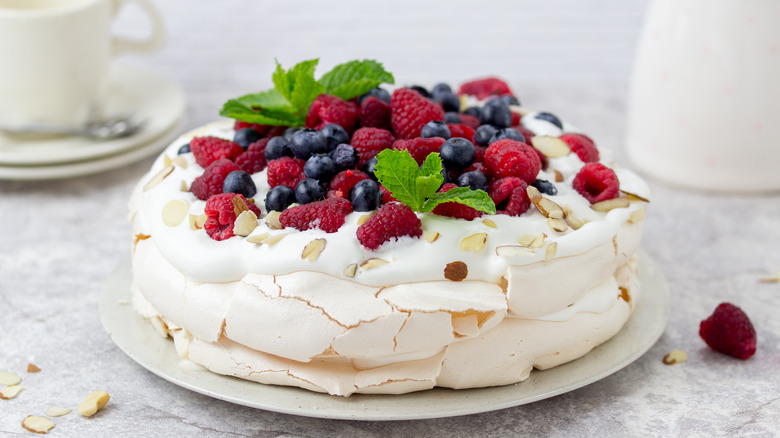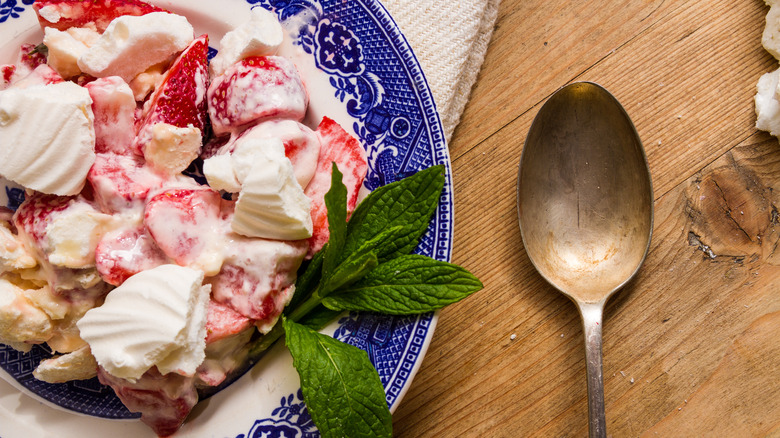Pavlova Vs Eton Mess: What's The Difference?
The feathery pavlova dessert, a delicate cake of lightly baked meringue topped with fresh berries and fruit, lemon curd, and chantilly (whipped) cream, is an elegant treat with aristocratic roots, dating to 18th-century Austria, according to BBC. They say the earliest rendition was known as the Spanische Windtorte, but the history is muddled, with many countries staking a claim on its creation. Meringue confections were popular in various countries across Europe and the Middle East before the advent of the modern pavlova (BBC).
No matter the history of the pavlova, the crisp cake, with its supple center, soon became popular across the globe. Recipes vary, but the pavlova is always a delicious, nearly weightless dessert, with just a few ingredients: whipped egg whites, a bit of caster sugar, and a thickening agent like cornstarch to stiffen the meringue, per BBC Food. They note that the entire dessert takes just minutes to prepare but two hours to bake. Glaze the top of the meringue cake with a layer of chantilly cream or lemon curd, and top it with berries, sliced fruit, and powdered or crystal confectionary sugar. Garnish the pavlova with edible flowers, white chocolate shavings, and mint sprigs. The recipe can be adapted for the seasons by adding cinnamon, spice, and pumpkin or chestnut crème topped with plum, hazelnuts, and shaved dark chocolate during colder months.
The difference is in the dish
The flavors and textures of the British Eton mess are nearly the same, but the presentation is dressed down. In contrast to the picture-perfect pavlova, the dégagé Eton mess is served in a bowl or small jar with a spoon rather than on a dessert plate with a fork.
Similar to a layered French parfait, the first meringue and strawberry Eton mess, called the Eton Mess aux Fraises, was first served at the 1893 summer pre-wedding party of the future King George V when he took Princess Mary of Teck as his bride. Queen Victoria was in attendance, and the dessert was a hit, according to Atlas Obscura.
What makes the Eton mess different from its refined cousin? Simply, the style of the meringue. Rather than forming the meringue into a single cake, the meringue is crafted into thin, crisp cookies. MasterClass suggests that you enhance the meringue cookies with cocoa powder or citrus zest to elevate the flavor. Once baked, the cookies are broken into generous pieces and layered in a bowl with heavy whipped cream. A traditional Eton mess tops the meringue pieces and whipped cream with strawberries and icing sugar, per BBC Food, making it look a bit like a delicious cluster. They add that creative play with different berries and flavors is welcome on the modern Eton mess.

